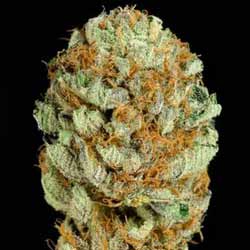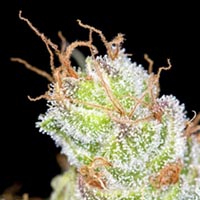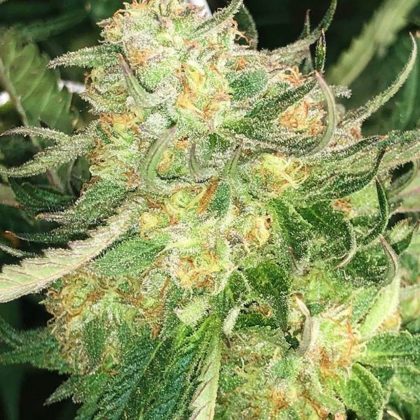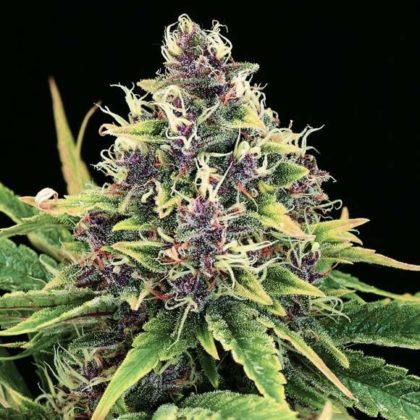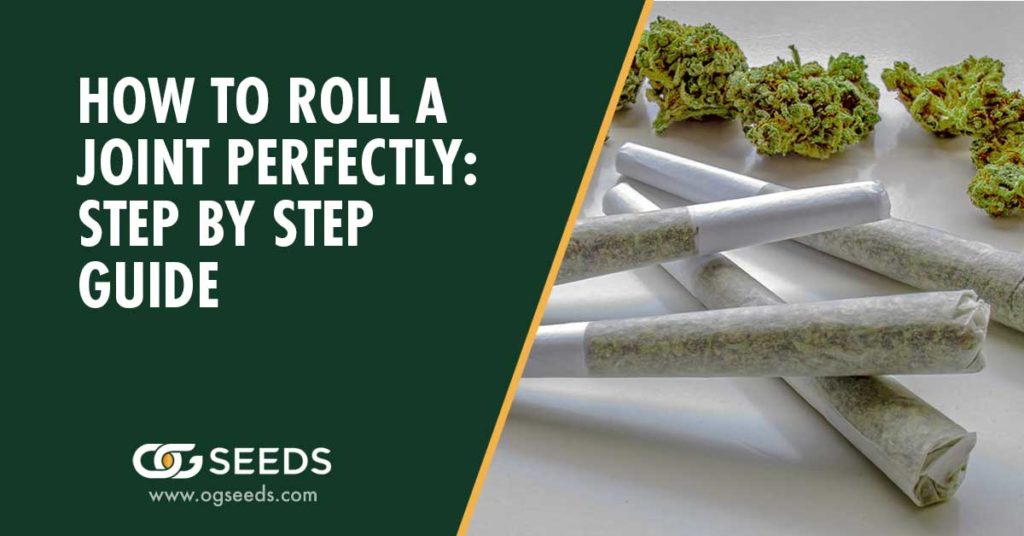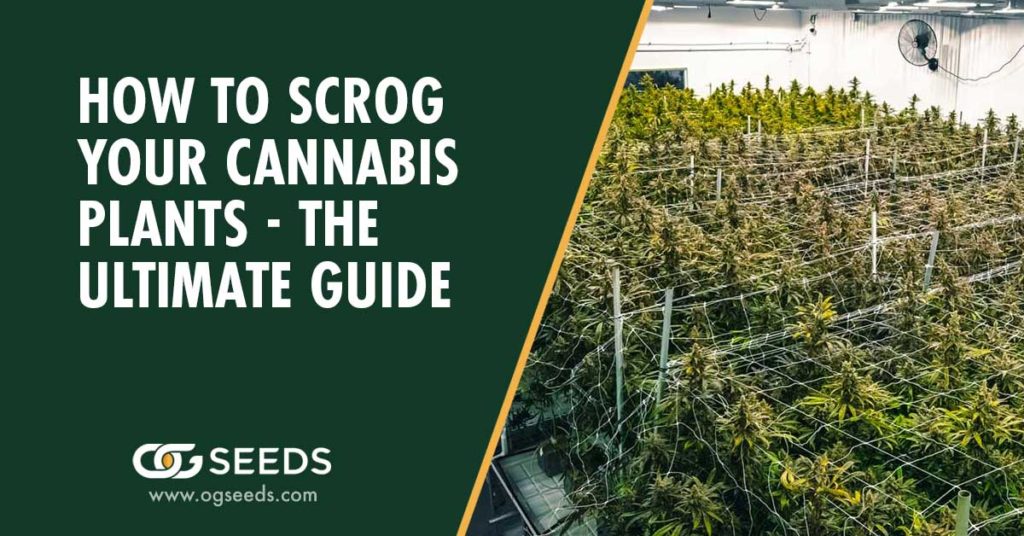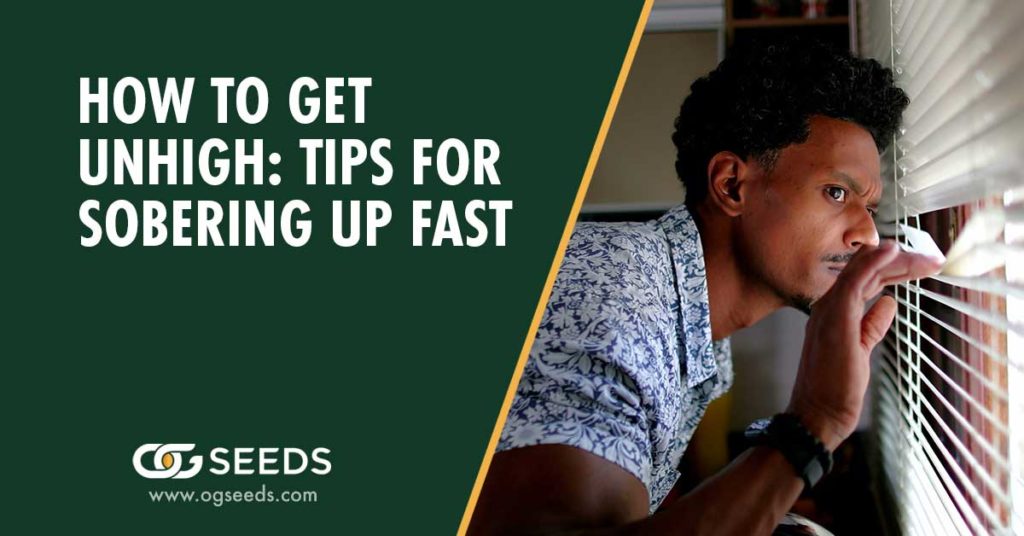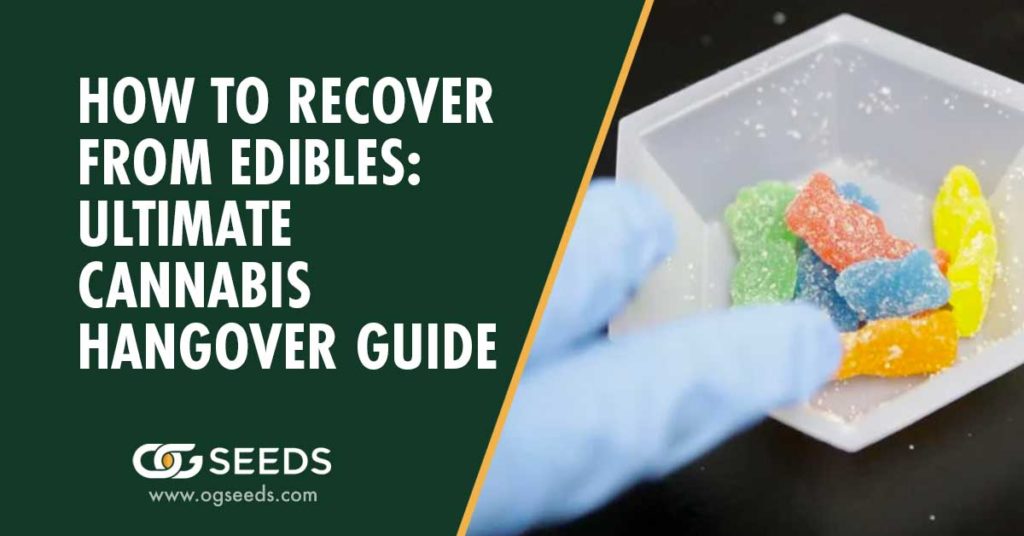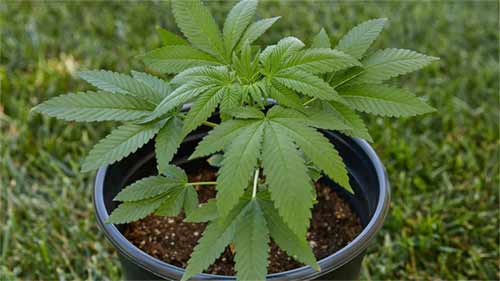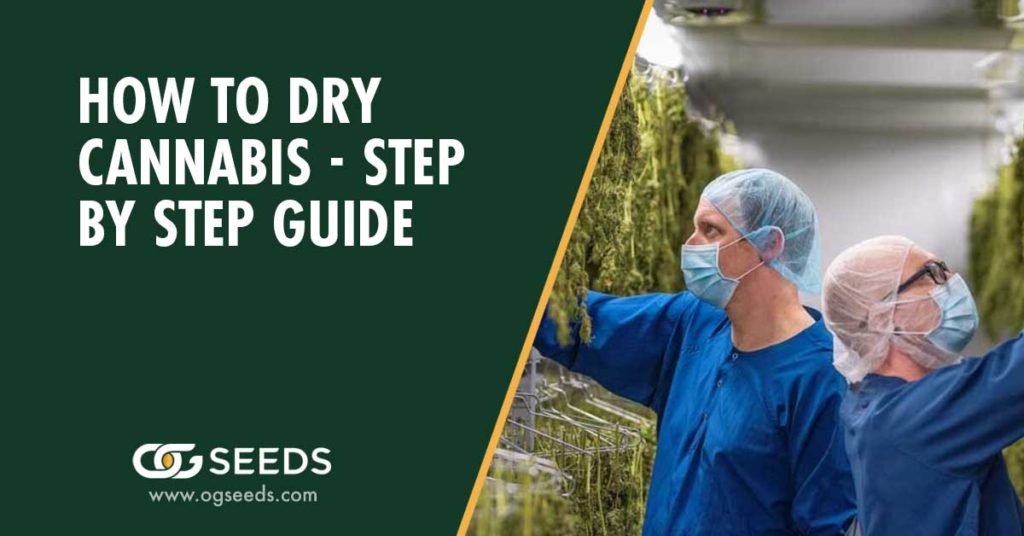
How to Dry Cannabis – Step by Step Guide
Drying Cannabis, proper drying and curing are crucial after cutting down Cannabis plants at harvest. Using these methods preserves and enhances the flavors of cannabis by retaining terpenes and cannabinoids while diminishing chlorophyll and getting rid of the vegetable taste.
In the drying process, buds are first dried in the open air. A freshly harvested plant can lose up to 75% of its weight due to moisture loss and trimmed sticks, stems, branches, and leaves. In “dry trimming,” the buds are trimmed after they have been dried. In “wet trimming,” the process is reversed.
The drying process should never be a rush job or for that matter extensive. Buds will appear dry on the outside but won’t be dry inside if the dry period is not long enough or cut short. Buds left to dry too long will develop mold. When the trim is complete, you will place the buds in airtight containers to cure. This will prevent moisture loss and can preserve flavors and aromas that will enhance the flavor of your buds.
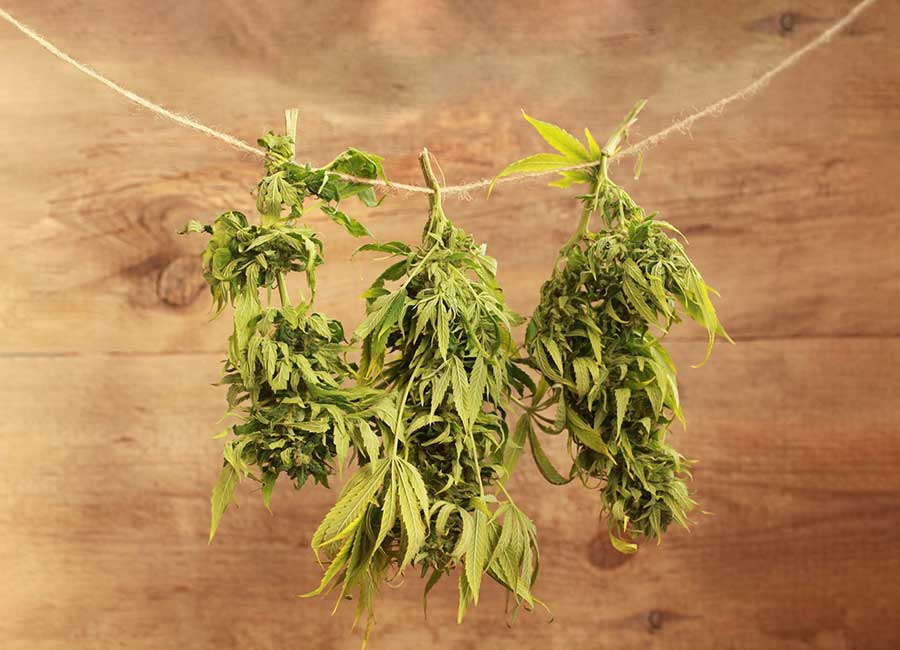
Table of Contents
Drying Cannabis
It is essential that you dry your Cannabis properly once it has been harvested and before you begin the curing process for your Cannabis. In order to ensure the best results, the drying process is the initial process that takes place in a controlled environment to dry Cannabis buds. As soon as you harvest, the plants must lose enough moisture so the buds are dry enough to begin curing.
One very important thing to remember when drying Cannabis is when to trim your buds. It is normal for the trimming process to occur either before or after your buds have dried out. The process of drying cannabis involves more than just setting it and waiting for it to dry.
There are several other steps you need to consider if you want to increase the flavor and potency of your trimmed buds, so keep reading to learn more about how to achieve this!
What Does Drying your Cannabis Do?
By drying your cannabis, you extend your bud’s shelf life, prevent mold growth, and remove moisture. Water loss can cause cannabis plants to lose up to 75% of their weight during the drying process. Proper drying also enhances the potency, aromas, and flavors of the nugs.
How Long Does it take to Dry Cannabis?
When drying and curing your cannabis, it’s important to remember that higher humidity conditions will extend the time it takes to dry your buds versus lower humidity conditions, which dry much faster. Normally, drying takes between two and seven days. “Wet trimming” usually shortens the drying process since most of the plant material is removed first, so less material needs to be dried.
Wet-trim buds will need to be on a drying rack after the trim is complete. When “dry trimming,” you can hang your harvested cannabis plants upside down on a line or hanger, whether whole plants or branches. This will prevent your buds from being flat or misshaped.
Whether you use a wet or dry trimming method, be sure to bend a branch or stem after two days to check your drying buds and branches. The buds are fully dry if the stem snaps. If the branch or stem doesn’t snap, leave your buds to dry a bit longer and check on them again the following day.
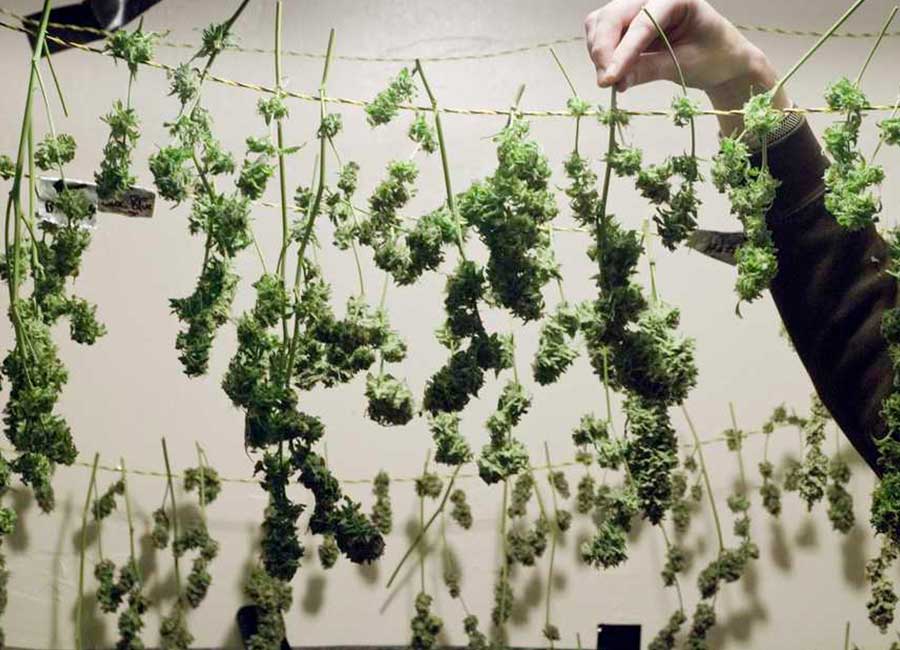
How to Prepare your Room & Equipment for Cannabis Drying
It’s always best to pre-prep your room and equipment before drying and curing so everything is in place and ready to go once you harvest and dry your cannabis. You could potentially harm the quality and potency of your entire crop if you don’t have everything in order before chopping your crop.
Setting Up Your Cannabis Dry Room
Dry rooms are similar to grow rooms in that you want a dark room where you can control the environment. Temperature and humidity in an optimal drying environment differ from those in an optimal growing environment. You should choose a room size that is appropriate for the amount of crop you plan to dry.
It is possible to have small dry rooms for small crops and larger dry rooms for larger crops. Your house or property may restrict what you can use for a drying room. It can be difficult to control the temperature and humidity in large rooms. You should also be aware that the room will smell like Cannabis.
Make sure the space you choose has little fluctuation in temperature and humidity. Adding a dehumidifier or AC and a small fan to circulate air might be necessary. You want to adjust the temperature or humidity if buds are drying slowly in your space.
How Dark Should a Dry Room for Cannabis Be?
The UV rays from the sun can damage your cannabis, so you should always keep your space dark for the best drying results. Your buds should be covered if you don’t have a light-proof space. Opening the door to check on the buds is fine, but prolonged exposure to light can speed up the drying process.
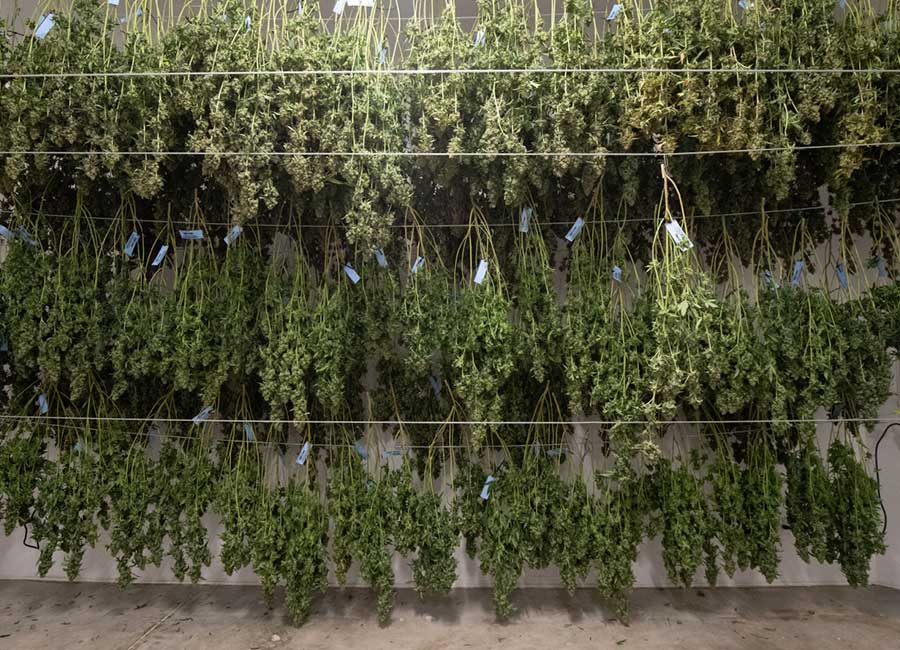
What is the Best Humidity for Drying Cannabis?
The best drying room will be dark, with a temperature of 60-70°F and a humidity of 55-65%. Lower humidity levels could cause your buds to dry out too fast, and higher humidity levels could take longer to dry and lead to mold and other issues.
Humidity is a very important factor in the drying process. A cheap hygrometer (an instrument used to measure humidity) will help you monitor these numbers.
What to Do if the Dry Room is Too Humid?
If your dry room is too humid, be sure to use a dehumidifier to fix the issue. Dry rooms tend to be too humid (instead of not humid enough), but a good dehumidifier easily solves the problem.
What to Do if the Dry Room is Not Humid Enough?
If your dry room is not humid enough and needs to be more humid, be sure to use an adequate-sized humidifier that works well with your room size.
What is the Best Temperature for Cannabis Drying?
The ideal temperature for drying cannabis ranges between 60-70°F. The temperature can be slightly cooler (55°F is usually okay), but hotter than 70°F is not good. Additionally, if you want to bring out the purple in your buds, set your temperature on the cooler side.
Using a heater or air conditioner is recommended to maintain the proper temperature, but using these devices can also tamper with your humidity levels, which is something you should keep in mind and address as needed.
What Type of Airflow is Best for Cannabis Drying?
Your drying space needs plenty of airflow to ensure optimal drying for your cannabis. It’s important to remember that you want to avoid too much direct air movement as it can dry out your buds too quickly, but not enough airflow could allow for the development of mold and mildew.
An oscillating fan or two pointed toward your buds about 7-10 feet away should facilitate the process and do the trick.

Cannabis Drying Tools & Equipment
The following is a list of essential tools and equipment for your cannabis drying room.
- A drying rack or line for hanging buds to dry
- The use of a hygrometer for measuring humidity and temperature
- An oscillating fan
- AC unit (as needed)
- Heater (as needed)
- Dehumidifier (as needed)
- Humidifier (as needed)
Cannabis is best cured in a room or space with stable temperature and humidity. Damp, moist basements or hot, clammy attics are not ideal. Your drying room should always maintain room temperature and not be too humid. Light can also spoil terpenes, so it’s always best if you can turn off the lights in the space and cover jars, so light doesn’t leak in. To learn more about the best tools for drying cannabis, CLICK HERE!
Additional Tips
Moreover, to successfully cure trimmed buds, you will need the following:
- Airtight jars
- A hygrometer for each jar to measure temperature and humidity
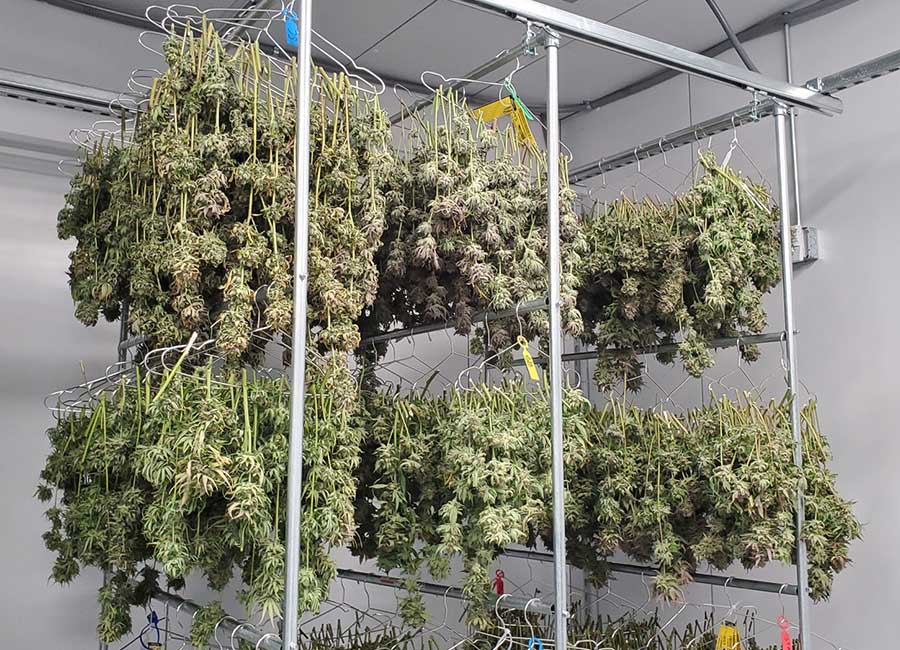
How to Hang Dry your Cannabis
When hang-drying cannabis, do not hang your buds too close to each other. It’s vital to have an adequate amount of airflow around and between the nugs. There is less labor involved with hang-drying, but it takes up more space. Hang-drying involves cutting off big branches and sometimes hanging entire plants upside down during the drying process.
The hang-drying method saves time because you don’t have to remove individual buds from branches, but since there is more plant hanging, drying this way will take up much more space. One downside to hang-drying is that buds may take longer to dry since there is more plant matter (such as branches, stems, stalks, fan leaves, etc.)
How to Dry Cannabis with a Dry Rack
If you decide to use a dry rack to dry your cannabis, it’s important not to stack your buds on top or too close to each other. Buds need adequate airflow around and between the nugs at all times. Furthermore, always rotate your buds throughout the drying process for the best results.
Wet trimming requires a flat rack because you’ll have many trimmed individual buds, which will not hang. Airflow is excellent with flat racks because they are circular with layered mesh. After 2-3 days, give your buds a little squeeze to check how they are drying. If they are still too wet, leave them overnight and check on them again the following day.
How Do You Know When Cannabis is Dry Enough to Start Curing?
Curing cannabis. It’s time to cure your Cannabis after the buds have finished drying and have been trimmed. Generally, when your small stems “snap” and do not just bend over, they are ready to jar. They’ll feel dry when they go in, but 12 hours later, you’ll be surprised how much moisture is still in there.
Store your dried buds in containers (typically airtight glass jars) during the curing process to stop moisture loss and preserve flavors and aromas. The curing process usually takes two weeks to a month, and the humidity inside your curing containers must be between 55 and 65%.
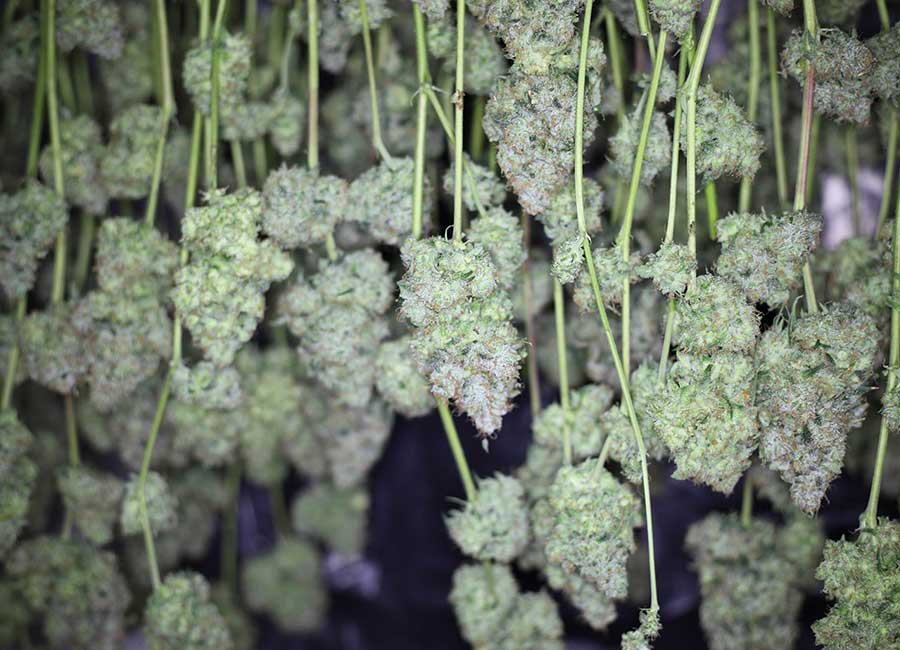
What Happens if You Dry Cannabis for Too Long?
Over-dried cannabis has less aroma and flavor and burns hotter and faster — resulting in an unpleasant customer experience, and typically requires a greater amount of cannabis consumption to receive the desired effect and experience. Additionally, over-dried Cannabis can get so dry that it crumbles to dust when breaking up the nugs.
How to Dry Cannabis Faster
If you wish to dry your cannabis faster, do not raise the temperature or lower the humidity, as this could jeopardize the quality of your buds. Instead, opt for a wet trim and dry your buds on a drying rack. This can shave up to 3-4 days off your dry time, and your buds will still be high-quality.
Should I Remove Fan Leaves Before Drying?
Removing large fan leaves helps prevent mold and promotes airflow between the foliage. Do not remove the sugar leaves. Some smaller fan leaves are good as they help the buds from drying out too quickly and create a good humidity level.
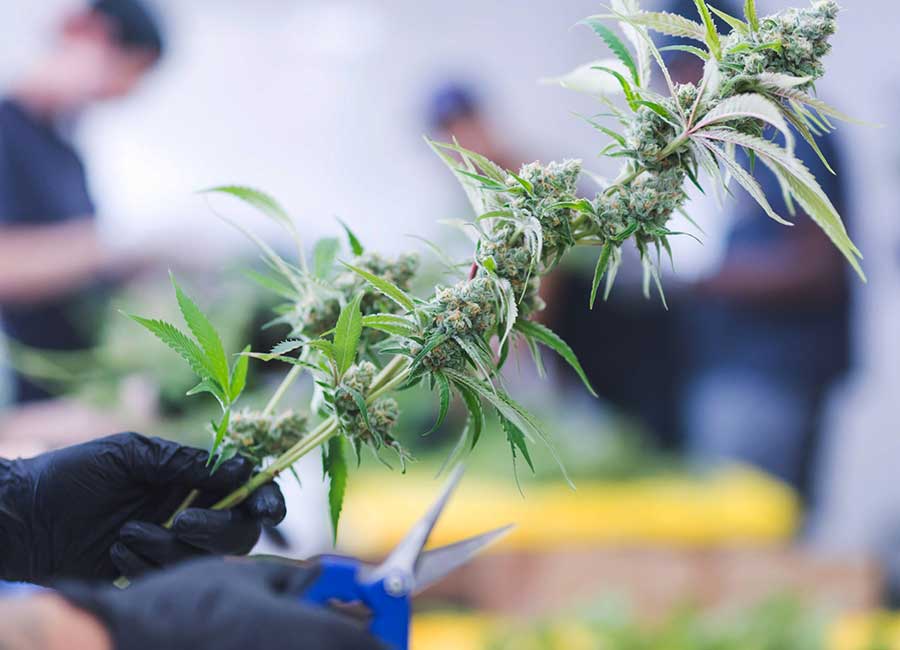
Dry Trimming Vs. Wet Trimming – Which is Better
In “dry trimming,” the buds are trimmed after they have been dried. In “wet trimming,” the process is reversed. You should hang-dry your buds on the stem with the water leaves removed for best results.
Hang-drying your buds on the stem allows more cannabinoids (from the sugar leaves and stalk) to flourish compared to wet trimming. Dry buds are also easier to trim. The main benefit of wet trimming is that it can speed up the drying process by a couple of days.
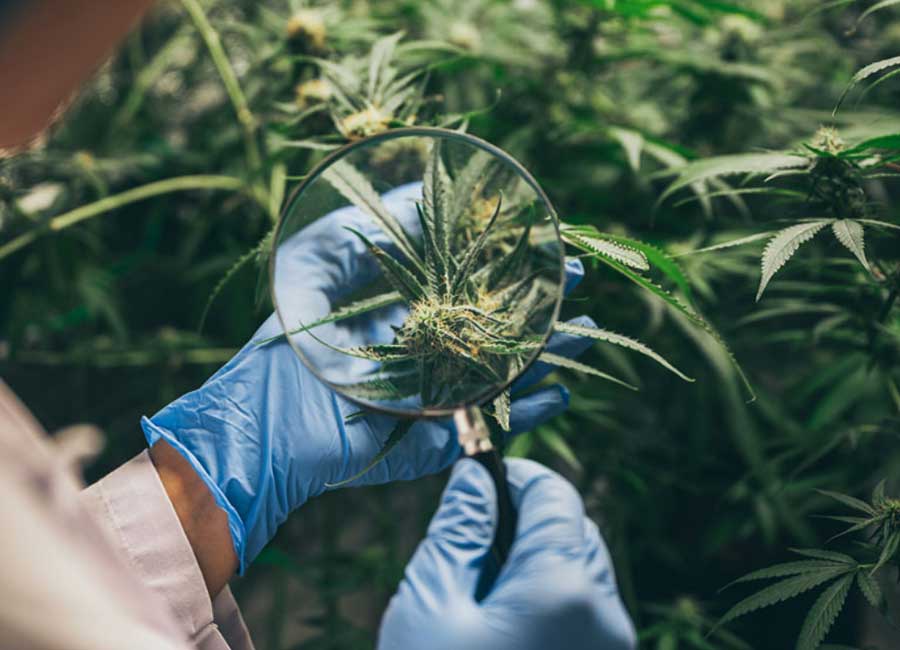
Final Thoughts – How to Cure Cannabis Properly
When it comes to drying and curing, we recommend taking your time. Drying and curing your buds slowly will increase their flavor and aroma and reduce harshness. Properly cured flower will be much easier to roll with!
Furthermore, equipment such as fans, air conditioners, heaters, humidifiers, and dehumidifiers help control temperature and humidity levels within any given drying space, ensuring a smooth and consistent drying and curing process.
